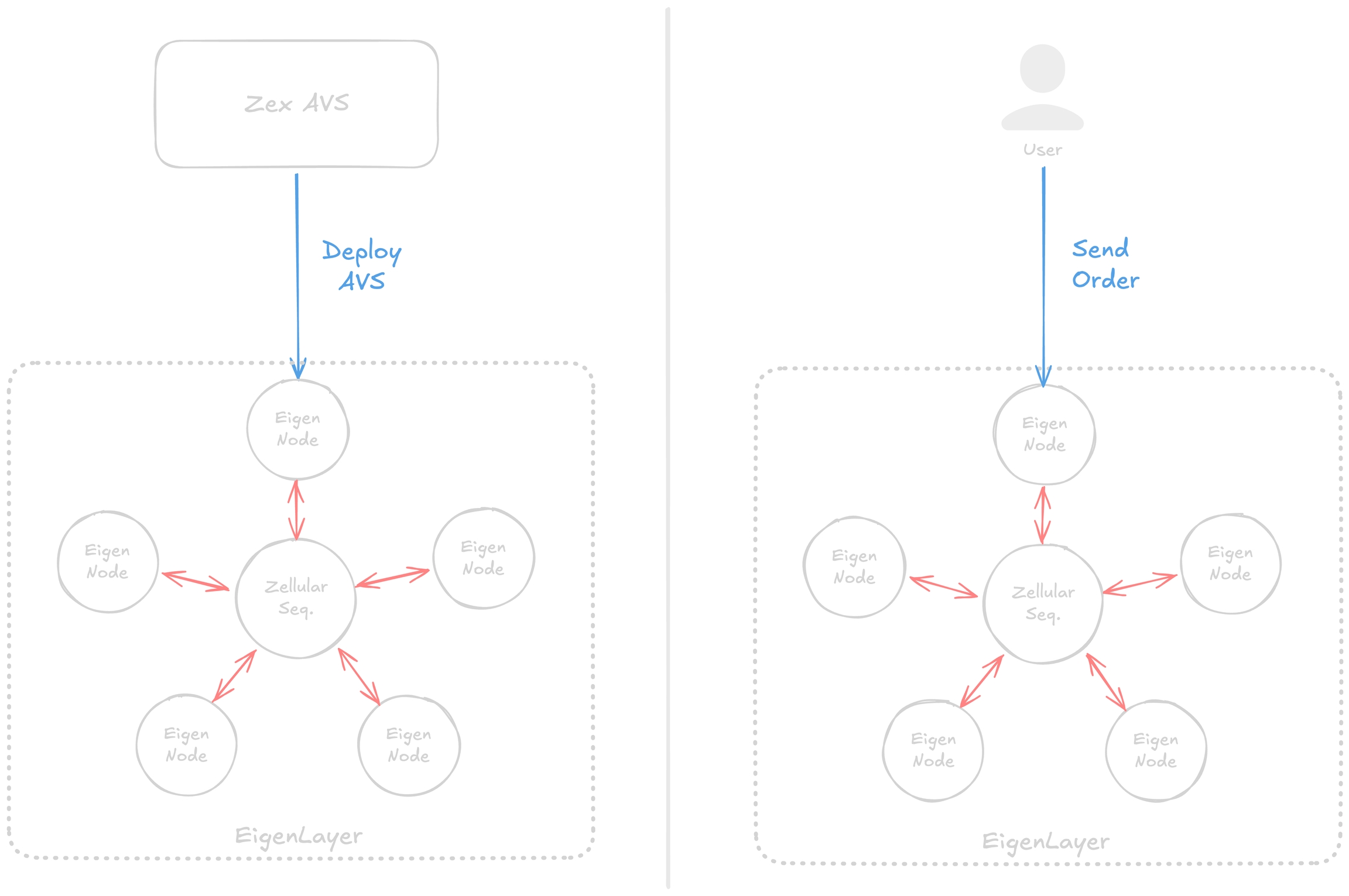Zex redefines the traditional decentralized exchange (DEX) model by replacing the conventional blockchain and smart contract architecture with and . An AVS on EigenLayer is a decentralized service built on Ethereum that leverages custom validation mechanisms for off-chain operations, secured through ETH restaking. Unlike legacy DEXs that rely on blockchain consensus, Zex employs the to establish ordering and finality among EigenLayer nodes, creating a more efficient, scalable, and decentralized trading environment.
EigenLayer Nodes as the Execution & Security Layer
Instead of using a traditional blockchain, Zex operates on EigenLayer, a decentralized network where staked Ethereum (ETH) validators secure execution through restaking.
These nodes validate transactions, ensure security, and maintain data availability, removing reliance on standard blockchain consensus mechanisms.
Restaking allows validators to secure multiple protocols simultaneously, increasing capital efficiency while preserving decentralization.
AVS (Autonomous Verifiable Service) instead of the Smart Contract
Instead of conventional on-chain smart contracts, Zex develops an AVS to process transactions and automate trading logic. We will delve deeper into this AVS to explain how we offer the user interface of a centralized exchange.
AVS enables off-chain computation with cryptographic verification, ensuring security and trustlessness while significantly improving execution speed. We refer to this as Zex being "sufficiently decentralized."
Zellular Sequencer: Coordinating Transactions and Finality
Zellular Sequencer is a decentralized sequencer that enables the development of high-throughput dApps. The sequencer is secured through EigenLayer infrastructure. For those interested in technical aspects of this sequencer, more details can be found in the .
Zex leverages the Zellular Sequencer to provide deterministic ordering of transactions and bring sub-second finality for transactions.
The sequencer aggregates and orders transactions before execution in EigenLayer nodes, ensuring syncronization while maintaining decentralization.
Unlike blockchain-based mempools, the sequencer optimizes sequencing off-chain.
Connecting a Wallet
Users connect their Web3 wallet (MetaMask, WalletConnect, RabbyWallet) to the Zex interface.
Unlike traditional DEXs, no blockchain fee is required, as execution happens on EigenLayer.
Trade Execution
When a user places an order, the transaction is sent to the Zellular Sequencer, which determines the order of execution.
The Zex AVS gets the ordered transaction batch from the sequencer and using its matching engine component to execute the transactions.
Transactions are executed, finalized and the user’s balance is updated in a decentralized and immutable manner.
